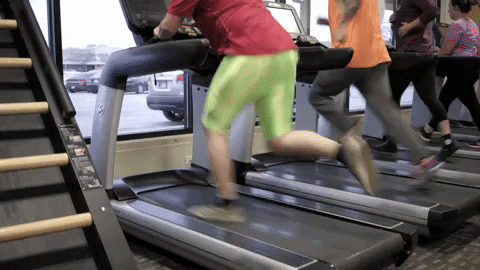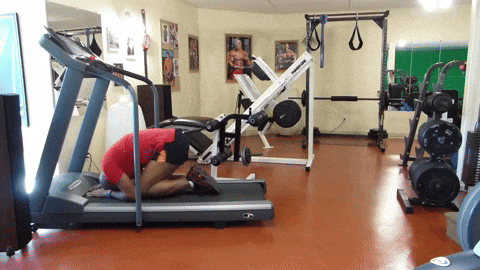Hey everyone and welcome to another running article!
First of all, if you are new, welcome! Make sure you are subscribed and you can get these letters straight in your inbox!
Today I want to talk about injuries.
I’ve been talking recently about injury prevention through strength and mobility exercises. And, although we didn’t talk about it in depth, you can also add stretching, foam rolling, massage gunning, etc to that list too.
For me, stretching and foam rolling are a lot like flossing my teeth. I get a really solid habit for a month and then my routine gets off ever so slightly and the whole thing collapses to nothing.
But we’re not here today to talk about injury prevention. I want to talk about what happens when we actually get injured.
Here is a fun statistic about runners: over 50% of recreational runners will suffer some kind of injury this year.
Most commonly these are overuse injuries, not the “I fell and got and broke my wrist” type injuries.
Overuse injuries are the kind where your body has had enough and a tendon, ligament, or joint starts to complain.
Recently, despite my efforts, I have come down with a case of plantar fasciitis.
This is a pretty common one, but a super annoying one too.
What is Plantar Fasciitis
For those that don’t know, here are the telltale signs you too have plantar fasciitis (PF):
Pain either directly at your heel or through your whole arch
The most pain is felt right when you get out of bed in the morning
Pain might oddly go away during runs as you warm up the area
Pain type can vary from sharp to dull, depending on severity and person
The plantar fascia is a thick band of tissue that goes from your heel to the ball of your foot, traveling over the arch. In other words, the plantar fascia really is the arch of your foot.
So that’s what the plantar fascia is, but what is plantar fasciitis?
You can probably guess at this point.
Basically, what happens is the plantar fascia gets inflamed from overuse or strain and then you get this pain.
It is so common, it doesn’t take much googling to find a whole slew of different techniques to try and get rid of this pesky little injury.
At this point, I think I have tried every trick in the book except stopping running all together.
I have decreased my total mileage and the number of harder running workouts I’m doing, though.
Another common reason you might get PF is actually less about the foot and more about not properly stretching and foam rolling your calf and achilles.
If either of those get tight, it can add unnecessary stress to the PF and cause inflammation.
Sooo…typical ways to resolve the issue are to ensure you are properly stretching and foam rolling. You can also foam roll the foot itself, ensuring you pull your toes back towards you so the PF is stretched out and actually receiving the impact of the roll.
People also suggest stretching your toes back while you rest and especially before getting out of bed.
And the final piece I’ve learned is that you can inflame that area when you don’t have any support, so if you walk around barefoot all day because you work from home. Or if the shoes you wear are more neutral and unsupportive because you wanted to build better foot strength. Then that could be contributing to the problem too.
So, what have I done and has it worked?
As I said earlier, I feel like I’ve really tried every trick in the book.
I got new shoes with more support, I’ve been stretching more, I got a brace that stretches the toes back while I work, I foam roll my calf, achilles, and foot, I limited my running, and I reduced my quality sessions.
Yet, the pain still lingers. It gets very aggravating.
Has it gotten better since doing all these things?
I like to say yes. I don’t know if that’s just because I want the answer to be yes or if it indeed is getting better.
I think the supportive shoes are actually making a slight difference. I do find that stretching and rolling first thing in the morning helps ease the morning pain quicker too.
So all in all, yes it helps. But no, it hasn’t made it go away forever yet.
What I’ve Learned
So far I’ve basically just given some general updates on my running, but what have I actually learned through this experience so far?
Or, if we’re more honest: what am I trying to learn and appreciate rather than just sulk and feel bummed out?
The body is super connected
First of all, it’s crazy how connected the human body is.
This foot pain is an inflammation most likely caused by a tight calf muscle or tight achilles tendon.
But on my other leg, my hip often gets out of whack and that seems to correlate to when that leg’s calf muscle is sore.
All of those issues can affect my upper body too! Add with working at a desk and driving a lot and my shoulders get out of whack because they are hunched forwards all the time. That can then have a negative side effect on neck stiffness.
And even neck stiffness can then mess up my running form or get worse from running. Although, it can also be improved from running too.
To top it all off, when something like this injury happens, our physical body can also have great effects on our mental health.
It’s hard not to feel discouraged and bummed out and start to lose motivation. That loss of motivation can quickly affect my motivation for eating a clean diet, and when you begin to eat a bad diet it just adds a huge accelerant to that spiraling fire.
I could probably go on and on, but you get the point. The body is super connected, when one part hurts the rest of the body adapts more than you realize.
That was one thing my chiropractor told me was I should stop running if this injury messes up my running form because then I’m at risk of a different injury. Our body likes to adapt even if it’s a risky adaptation.
Another example is when I broke my collar bone. As I was healing, my arm was in a sling and any movement with my left shoulder was pretty painful (I broke my left collar bone). I was shocked how many tiny minute movements with the right side of my body incorporated the muscles on the left side. You really don’t realize it until moving one side causes pain, haha!
When you realize how connected our human body really is, it paints a totally different picture of Paul’s analogy of the church as a body.
We are all connected to our brothers and sisters in Christ just as our calf, foot, and brain are all connected. We move in conjunction together, and when one part hurts, we adapt to help, even if we puts ourselves at risk.
All so the body as a whole can continue in our mission to share Christ with the world.
Injuries will happen, we are not a perfect body, and that is ok
This is the other lesson I keep telling myself. It is not helping yet.
But the reality is, I know we live in imperfect bodies that will decay and break over time. I know that one day we will get a new body in Heaven that will be perfect and never decay.
For now, however, we are in these. This means 2 things to me:
First, it means that even though this body will decay, this body is still a gift from God and I want to steward my body. I want to feed it well, take care of it, and use it for God’s glory.
That’s one of my main goals in running. God has given me a gift of discipline and a gift of 2 legs that work, so I am choosing to use those gifts to run marathons. And then write and talk about it in a way that brings Him glory.
The second thing is that eventually this body will break down. Maybe I won’t be the crazy 100 year old running marathons. But I sure will try, until my body tells me otherwise.
But it’s easier said than done to accept an injury as normal. To take care of your body and listen when it’s hurting.
Motivation wanes
Which leads to my next point. I mentioned it earlier and I’ll mention it again. When an injury happens, it’s so hard to not let it affect your mental health and watch all your motivation in life drain away.
And you justify it too! I know I do. “Oh, I need to rest and take care of this injury, so I’ll eat junk food and play video games all day.”
But that doesn’t help our overall health or motivation; in fact, just the opposite.
So what I’m going to try and do is continue sticking to the plan, continue training, and simply adapt where I need to. I might try riding a stationary bike more rather than running every day. This will help keep my cardio high, but have less impact on the plantar fasciitis.
I need to keep a high discipline in my stretching and recovery, and trust that eventually this will go away.
And I need to be ok with the fact that maybe an injury will prevent me from PRing my next race because I couldn’t get enough training in. Hopefully that’s not a reality this year, but I know that one day it probably will be.
I don’t say any of this to be discouraging, but rather encouraging.
We are all human and injuries happen.
And “injuries” can be synonymous here with any setback or trial we face in life.
If we allow that trial to take us down, then we’ve given in and the trial wins. But when we look to God, trust Him, and move forward, we will come out stronger, more resilient, and more matured in our faith.
So until next time, run (safely) with joy!







